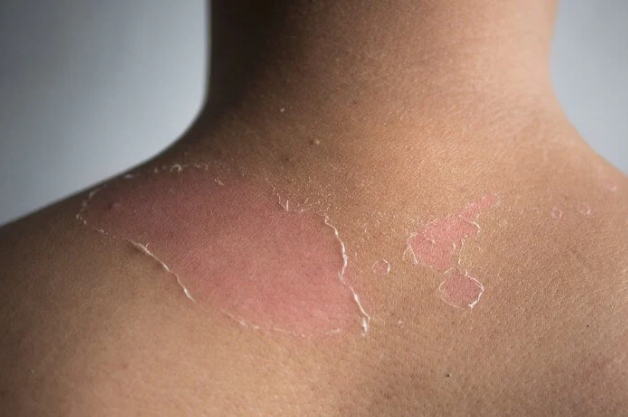
Pellagra is a condition that occurs due to a deficiency of vitamin B3 or niacin.
The disease can cause many symptoms, the most common of which are diarrhea, dermatitis, and dementia. Without diagnosis and treatment, pellagra can be life-threatening at any time.
In this article, we'll learn more about pellagra, including its risk factors and treatment options.
What is Pellagra?
Pellagra is a disorder that occurs when a person doesn't get enough niacin, or vitamin B-3.
Pellagra is generally divided into two, primary and secondary. Primary pellagra comes from insufficient niacin in the diet, while secondary pellagra develops when the body is unable to absorb niacin.
Niacin can be found in animal protein, fruits, and vegetables. The body can also produce niacin through essential amino acids. The body gets this amino acid from chicken and sunflower seeds.
Primary Pellagra is generally experienced by people who only eat white rice and corn food, because the niacin in these foods is only present in the form of niacytin, which is a substance that cannot be digested by humans.
Some conditions, such as alcohol use and HIV can also stop the body from absorbing niacin and can lead to secondary.
The Symptoms of Pellagra
following are signs of pellagra:
Pellagra causes gastrointestinal, skin, and neurological problems. The main symptoms are:
- diarrhea
- skin inflammation
- Dementia
Gastrointestinal symptoms
The most common digestive problem is diarrhea. Diarrhea is a canal disease that shows the process of passing watery and watery stools at least 3 times a day.
Diarrhea can lead to fatal dehydration, and can lead to malnutrition over time, as it can affect the absorption of nutrients from food. This disease is also often the first symptom of pellagra to appear.
Other gastrointestinal symptoms include:
- vomiting
- abdominal pain
- nausea
- indigestion
- decreased appetite
- canker sores
- swollen tongue
symptoms Dermatological
Pellagra-associated dermatitis often causes thickened and scaly skin, rash, and discoloration.
Doctors call the appearance of symptoms around the neck as a Casal collar or Casal necklace.
Areas of skin that are exposed to this may become sensitive to light, making them feel and look more like sunburns.
Other dermatological symptoms include cheilitis, which is an acute or chronic inflammation of the lips.
Usually involves the vermilion lip and the vermilion border. Common symptoms include, dryness, scaling, edema, itching, fissuring erythema, burning.
Neurological symptoms
Several neurological conditions, such as anxiety and depression, are early symptoms of pellagra. When pellagra spreads more deeply, the most common symptom experienced is dementia. Also includes:
- memory loss
- delusions
- confusion
- in some cases, psychosis
There are 3 main symptoms of pellagra due to alcohol consumption which are related to nerves and the brain.
- confusion intermittent (Confusion all the time)
- Muscles become stiff and difficult to use
- Excessive startle response
Without early treatment, pellagra can pose the most severe risk, namely death.
Causes of Pellagra
The causes of primary and secondary pellagra symptoms are different.
Primary pellagra occurs when a person's diet is very low in Vitamin B3 or niacin.
The people most at risk of getting primary pellagra are those whose diets mostly depend on rice or corn as staple foods.
In addition, a person who cannot absorb vitamin B-3, despite having a diet rich in niacin, may be at risk of developing secondary pellagra.
A significant risk factor for secondary pellagra is regular alcohol consumption.
An article from 2014 showed that alcohol use disorders can lead to pellagra due to malnutrition. A person may not eat enough food that contains niacin, and alcohol can prevent the body from absorbing it.
Alcohol can stop the development of protein that is absorbed into niacin. Niacin deficiency can make pellagra develop.
Other risk factors for secondary pellagra:
- Malnutrition due to homelessness, anorexia, HIV, or end-stage cancer
- Crohn's
- disease Hartnup disease
- Dialysis
- certain drugs, such as isoniazid for
- carcinoid syndrome tuberculosis, a collection of symptoms due to carcinoid tumors
Treatment of Pellagra Disease
A doctor may diagnose pellagra if diarrhea, dermatitis, and dementia present concurrently.
However, this condition can be more difficult to diagnose if these symptoms do not appear together.
A doctor can test the person's urine and blood to check for niacin deficiency along with other pellagra disorders.
People can treat primary pellagra by eating foods rich in niacin.
Nuts, eggs, fish and meat.
However, doctors will likely prescribe vitamin supplements to help a person regain healthy levels of niacin.
The treatment for secondary pellagra is the same, but doctors need to detect an underlying cause.
Summary
Pellagra is a serious condition that can affect a person's quality of life and health. If not treated early, pellagra disease has the potential to cause death.. It is very important to see a doctor if pellagra symptoms appear.
To avoid pellagra, it is important to take the recommended daily allowance of niacin (RDA).
The RDA for niacin is:
- 14–16 milligrams (mg) per day for adults
- 18 milligrams per day for women who are pregnant and breastfeeding
- 6–16 milligrams per day for adolescents under the age of 18
- However, most people who do not depend on corn for food will not develop primary pellagra.
After people get an intake of food or supplements to treat Pellagra disease, then they can return to full health.










